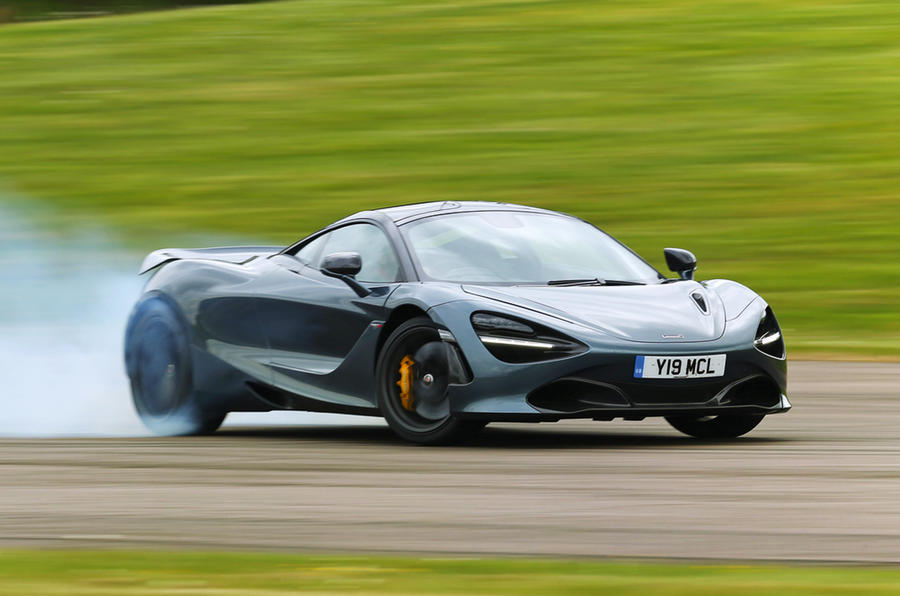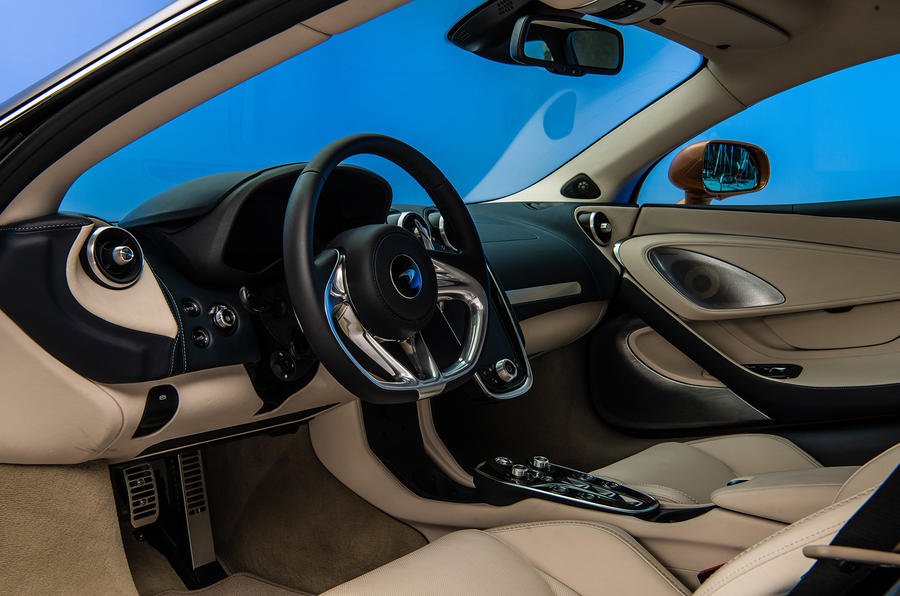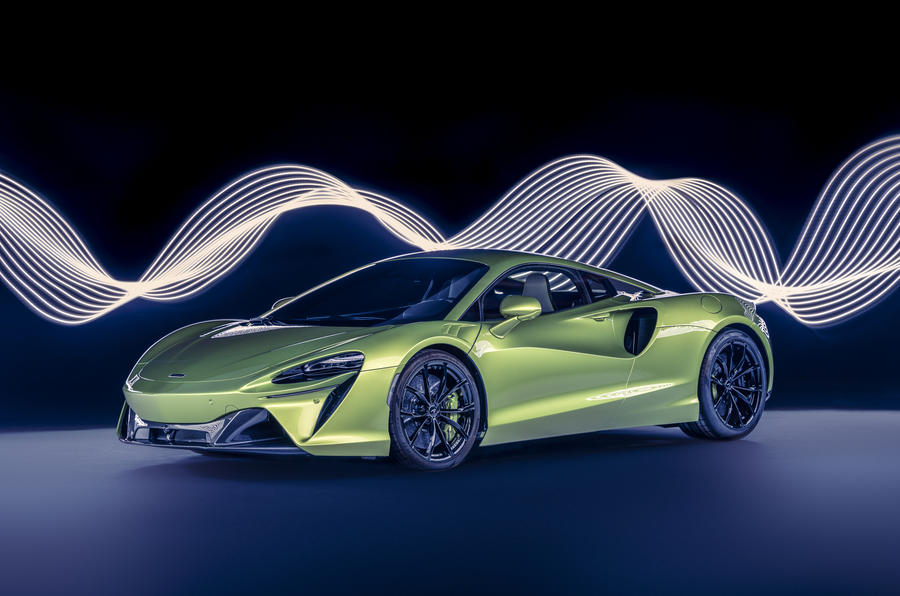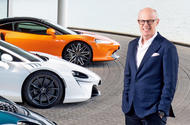New McLaren CEO Michael Leiters
Former Ferrari technical chief outlines his vision for Woking from day one to electrification and more
New McLaren CEO Michael Leiters has given his first interview in the role exclusively to Autocar. In this extensive Q&A, the ex-Ferrari technical chief outlines his plans for the Woking firm and how he has found the role and life at the company so far.
How are you finding it at McLaren, and is it as expected?
“I love it. It’s quite like I’d expected if you take the average, but if I take the extremes, they’re more extreme. So the positive things are more positive than I thought, the negative things are more challenging than I thought.”
Why did you want to come to McLaren?
“First of all, I see a big potential in the brand and in the company. Seeing where McLaren is today, thinking about what it could be and then driving this change, that’s something that really motivates me. I like to work as an entrepreneur, and this feels like an entrepreneurial space.”

How did you assess McLaren from afar when you were sat in your office in your previous role at Ferrari?
“How could we beat them! I would say McLaren was the most important competitor for Ferrari. Because the positioning of the supercars is obviously exactly as at Ferrari. I appreciate McLaren as a benchmark in certain areas: weight, driving dynamics and aerodynamics. Weight is absolutely the best in class. Aerodynamics and vehicle dynamics are competitive in some attributes and best in class in others. Performance wise, the 720S, for example, is a very, very quick car. And it took us at Ferrari many years to counter this car. There are other attributes where Ferrari is ahead of McLaren, but from a performance point of view and from the weight point of view, it took us three years to reach the 720S. So this is definitely something we always recognised in Ferrari. There are other things I think we can do better in McLaren, and this is driving emotions, sound and the looks. That’s something McLaren can do better.”
What is your number one priority here and what can you affect the change of most quickly?
“I think we have three areas. One is the organisation, the people, the culture. Second is the products and all things that are related to the products. This doesn’t mean we don’t work on production, for example, or selling the products. And the third thing is we have to manage our financial situation, especially regarding cash. These are our priorities, and we’re working already to improve these things.”
What changes can you quickly make to the cars?
“We aren’t good enough in quality. I think [improving] quality has big potential. Quality is perceived badly by our customers. So we created bad customer experiences on the product itself, but also how we manage issues when they appear to the customers. And this definitely has an indirect business impact on residual values. So for me, this is really key to work on quality, to have better quality and to better manage the experience of the customer. There are three types of quality: one is reliability, one is functional quality and one is perceived quality. And we have to start with reliability.”
Reliability has always been an issue at McLaren…
“Absolutely, and we can’t accept that. The team has started really important work, and we already see positive things on quality. You have a short response time on that. You can see after three, six months a return and result. Unfortunately, the reputational bit takes longer. Your customers will also own Ferraris and Lamborghinis, so they will directly be able to compare your reliability to theirs. They also have Mercedes, Porsches. They have a BMW. They know what it means to have a reliable car. Our products are so appealing, so emotional, and our customers are very forgiving for that. But we shouldn’t use this and we shouldn’t take profit out of it. If it happens once [a reliability issue], okay, it happens once. But if it happens every day? This is why we’re so focused now on the software. If you get a message that your system isn’t okay, normally 99.9% of the time it’s nothing, it’s only in diagnosis or a communication problem of the system, and one end says ‘I didn’t get the information I need’ and there’s a problem. And this is what is really upsetting you [as an owner], because it disturbs you. It destroys your customer experience.
What do you think the McLaren brand stands for?

“Modern luxury. I think McLaren is a very exclusive, technology-driven product and brand. It’s a very special customer experience. The exclusivity allows you to do that, because your customer base is not in the hundreds of thousands. So that it’s very small is in this case a positive. I think this is something we do already with special driving events and so on. I think we can even do more. Next year, we will have our 60th anniversary, and I think we will have good things to celebrate and involve our customers.”
How do you make McLaren sustainably profitable?
“Product is very important. I would say product will be 70-80% of the success to turn around this. Then we will have to look at our costs and our cost base to find the right cost base. And we have to improve certain episodes to improve our performance or the markets where we sell our products. I think there are some emerging markets or some markets where we still have potential. I also think a lot of the line-up isn’t clear enough to the customer. We have to follow more the customer and the market segmentation than engineering ideas. Definitely we’re distinguishing our product through engineering and through technologies. But we have to increase the differentiation between models through technologies and also through design.”
Is McLaren’s range all too similar at the moment? If so, how do you build more differentiation?
“I think yes. If we want to extend product offering, we have to extend it in a clear way. It doesn’t make sense to make a very sporty car with a front engine for us, because it’s creating cannibalisation. If we go to new segments, we should really make sure these are clearly distinguished from our current segments. And again, we should think about what is the right technology for that segment.”
We’ve heard plans are progressing at McLaren for an SUV. What can you say about that?
“I developed an SUV at Ferrari. I developed an SUV at Porsche. So I love SUVs. But we won’t do it for me, yet I think it’s a really important market. It still is, and it continues to grow. It’s very attractive as a market segment. What we have to understand as McLaren is how can we find a product that is in line with our DNA? We shouldn’t do a classic SUV. And to be very honest, we haven’t decided to do it or not to do it, and we haven’t had a clear idea. So we are in the beginning, what could be new segments, market segments, and what could be product concepts we could use to capture new business opportunities. It’s not only an SUV; it could also be others.”

How big an opportunity is electrification for a brand like McLaren?
“Hybridisation is a big opportunity for us, because you can work on the power. I think also from the technology perception point of view, it’s very positive for us. For supercars, I think the technology for pure BEV is not there. It will take years for that, and the main driver apart from range anxiety is actually the weight. There are many, many examples in the market where somebody announced something, and then you will see hundreds of kilos deviation from that. So I think it’s very difficult today. There’s a limit on the technology today.”
How long will internal combustion engines live on at McLaren?
“Hybrid is a transition definitely to BEV, but the timing for me is long term. I think it’s underestimated how important ICEs will be, especially in our segment, also in the future. And I hope that the regulation framework will allow us to have to continue with having business in this niche. There are two things [to consider]: one is the regulatory framework and the other is the customer. I think there’s a big appetite for ICE [from customers], and hybrid can cause big a appetite, too. It’s like a quartz watch or an Apple Watch. An Apple Watch is good, but there are many, many people that are having mechanical watches. I think of the weight and the emotional part of driving a car, the sound and gearchanges, of all these things. We have to work a lot on electric technologies to get the same engagement, the same involvement of the customer in the car. This isn’t a car to buy to go from A to B. Cars are emotional products. Everybody, every brand has to understand how it can manage the transition to new technologies without losing the DNA.”
Do you think there’s room for both ICE and BEVs?
“That’s right, exactly. Except, and I think this is key, when we see a role for the ICE, it’s not necessarily in mass transport. It’s in the emotive and more limited use of a car [like McLarens]. And then when you look at track-only cars, you can extend that even further in terms of the application of the ICE, because there are limitations of electrification in terms of the weight, the dynamics, but then there’s also quite literally how long an electric car can sustain the expulsion of its power for track use. And you know, if you’ve got a track car that can only do five laps and then needs to be charged for half a day, it’s not much of a track car.”
What are you being judged on: profits or volume?
“I care to manage our supply chain and to manage our plant so we have a predictable volume. We have to have stable processes for suppliers and for us. I would be happy to sell one car and make £100 million profit to be extreme. So less models, more profit and the right volume, not more or less.”
There’s been a lot of talk about McLaren ownership and partnering with another manufacturer, perhaps from Germany. Are you personally open to working with partners?
“You have two sides of a partnership: one is technology and one is financial. And if you find both in one, definitely that will be the best. But the first thing is to have a technology partner to create synergies, but it has to be the right partner. We have to maintain our DNA. I’m not interested in any partner which gives me only ‘me too’ technology. So the question is to find the right partner; the question is not to find a partner.”
What did you say to your team when you walked in here on day one?
“First I said what my external view on McLaren was. What I like and what I don’t like. Second I gave them the priorities, the priorities we talked about. So working on people, team organisation, culture, working on product and working on the financial and cash situation. And then I made a comment on having a new boss. I said: ‘First thing is give everybody a chance. Second thing is to understand. And the third thing is to act.'”
How do you want to look back on your time at McLaren?
“As a profitable, sustainable organisation, with a team which is capable of approaching all challenges that can happen. And a company that has done the transformation process we have to do, and with a futureproofed company.”
Source: Autocar
